Happy Birthday To Vera Rubin: The Mother Of Our Dark Matter Universe

Our Universe cannot be described by normal matter alone. Vera Rubin’s work led the way.
Ask an astrophysicist what our Universe is made of, and you’ll likely receive a shocking surprise. While everything that we know of and interact with on Earth is made of the same normal ingredients — the protons, neutrons, and electrons that make up atoms and the rest of the normal matter we know of — the Universe tells a very different story. Normal matter is only 5% of the Universe, with dark matter (27%) and dark energy (68%) making up the vast majority of what’s out there.
This isn’t a prejudice or an ad hoc fix that was put into place, but a scientific conclusion that was reached based on the full suite of data we’ve collected about the Universe. If it defies your intuition, don’t worry; you aren’t alone. But the science that led us to that conclusion is irrefutable, and was pioneered by one of the most deserving scientists never to win a Nobel Prize: Vera Rubin. Here’s the story everyone should know.

Vera Rubin was born on July 23, 1928: 91 years ago today. The original idea of dark matter came about when she hadn’t yet reached her fifth birthday. Back in 1933, Fritz Zwicky was studying the galaxies of the Coma Cluster: the largest, richest, most massive galaxy cluster within about 500 million light-years of Earth. There are thousands of galaxies within the Coma Cluster, with two giant elliptical galaxies anchoring the center.
Zwicky took note of two important measurements that were made of the galaxies within that cluster.
- How much light was coming from those galaxies, which enabled him to estimate how much mass there was in stars in those galaxies.
- How fast those galaxies were moving relative to the center of the cluster, which enabled him to infer how much total mass was present throughout the cluster.
If 100% of the mass were in the form of stars, these two numbers would match.
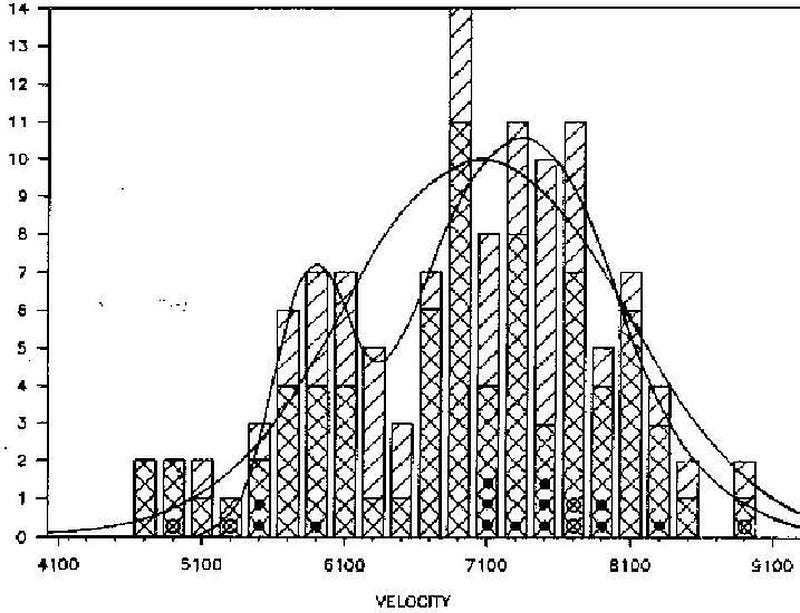
But, as Zwicky noted, not only didn’t they match, but they weren’t even close. According to Zwicky’s original 1933 work, these two numbers differed by a whopping factor of ~160, with the total mass exceeding the mass inferred from starlight by this enormous amount. Zwicky went a step farther than this analysis, and proposed that there must be a new form of matter that didn’t emit or absorb light to account for this discrepancy: dunkle materie, or dark matter.
To say that nobody took Zwicky’s work seriously is a gross understatement: his work was not even cited by another scientist until 27 years had passed. While his hypothesis of dark matter wasn’t the only possible explanation, it certainly deserved consideration. But, due to prejudices and astronomical/astrophysical limitations of the time, the idea of dark matter simply didn’t catch on.
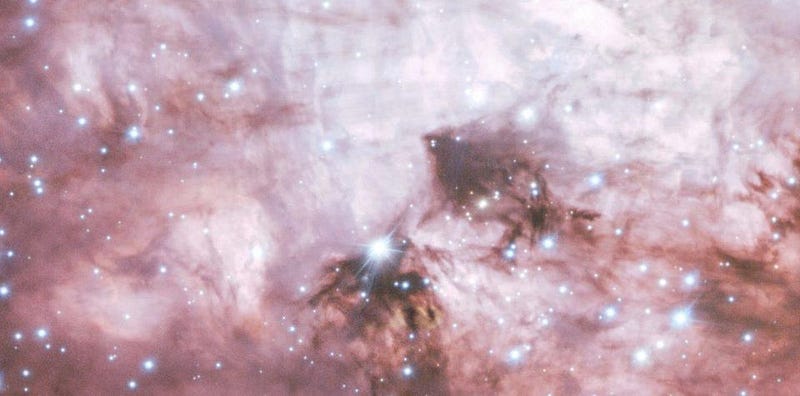
There were some excellent objections that one could make to Zwicky’s work. For one, he assumed that all stars, on average, were similar to our Sun, and that the mass-to-light ratio of the Sun was a good estimate of the mass-to-light ratio of all stars. It isn’t, though; the average of all stars gives a ratio that’s approximately three times greater. Instead of a 160-to-1 discrepancy, this would make this a 50-to-1 mismatch.
Another objection is that not all of our normal matter is in the form of stars. In addition to planets, there are also gas clouds, plasmas, dust, black holes, failed stars, and many other types of matter. Who’s to say that the non-luminous normal matter couldn’t account for 98% of what’s out there? While we may have that value well-quantified today (it’s about 13–17%), a Universe 100% full of normal matter wasn’t ruled out in 1933.
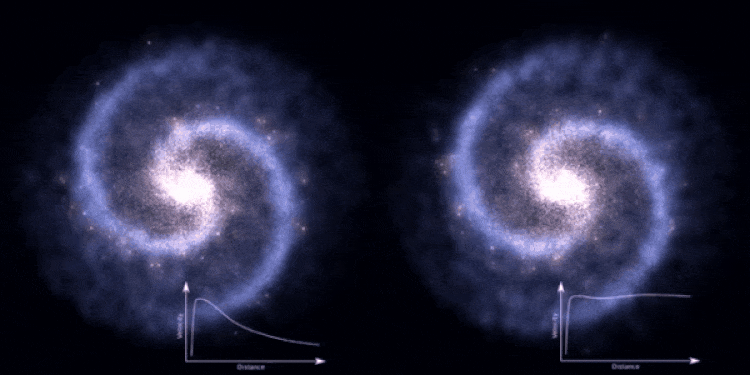
In the 1960s, however, astronomical equipment and techniques had improved sufficiently that scientists could begin measuring how quickly individual galaxies were rotating. When they did, they noticed something important: the amount of mass you’d infer for individual galaxies couldn’t come close to explaining the motions of individual galaxies within a large cluster like Coma.
This wasn’t enough to bring the idea of dark matter to the mainstream, but it was enough to suggest a different test: to measure the rotational motions of different parts of an individual galaxy. Spiral galaxies — like our own — tend to have a large, bright, central bulge, and get fainter as you move farther away from the center. With most of the mass concentrated near the center, you’d expect the outer regions to rotate more slowly than the inner ones.
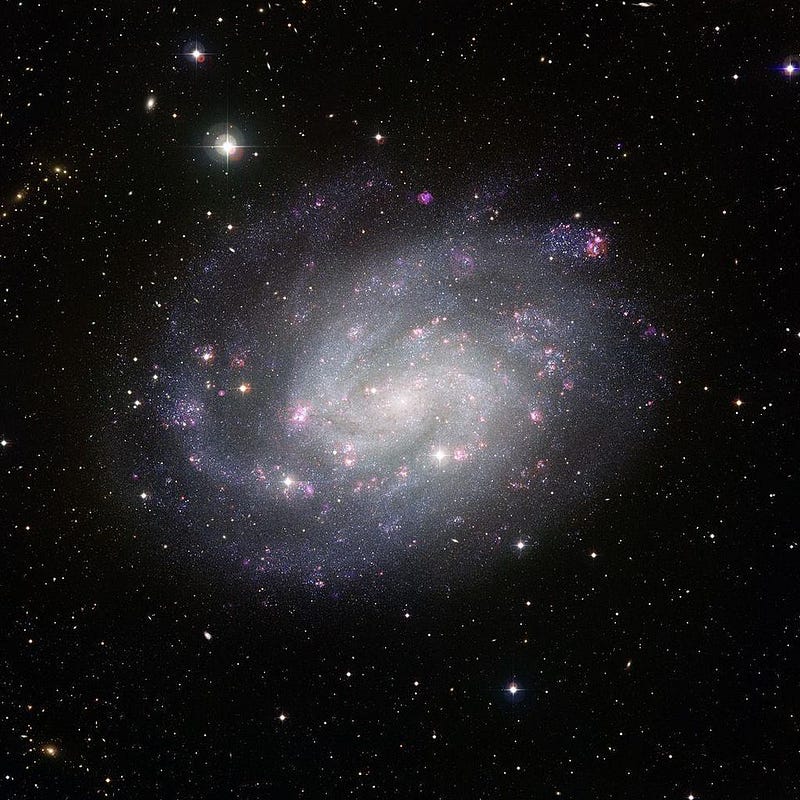
We see this in our own Solar System. Our Sun makes up 99.8% of our Solar System’s mass, meaning it’s almost exclusively responsible for determining the orbit of all the planets, asteroids, comets, and Kuiper belt objects we know. Mercury, the innermost planet, experiences the strongest gravitational pull, and orbits the Sun with an average speed of 48 km/s: more than 100,000 miles-per-hour.
Earth, on the other hand, is almost three times as distant as Mercury, and orbits with a much lower average speed: 30 km/s, or around 67,000 miles-per-hour. The speed of the planets continues to decrease as you move outwards, with Neptune, the slowest and outermost planet, orbiting at an average speed of only 5.4 km/s: just 12,000 miles-per-hour.
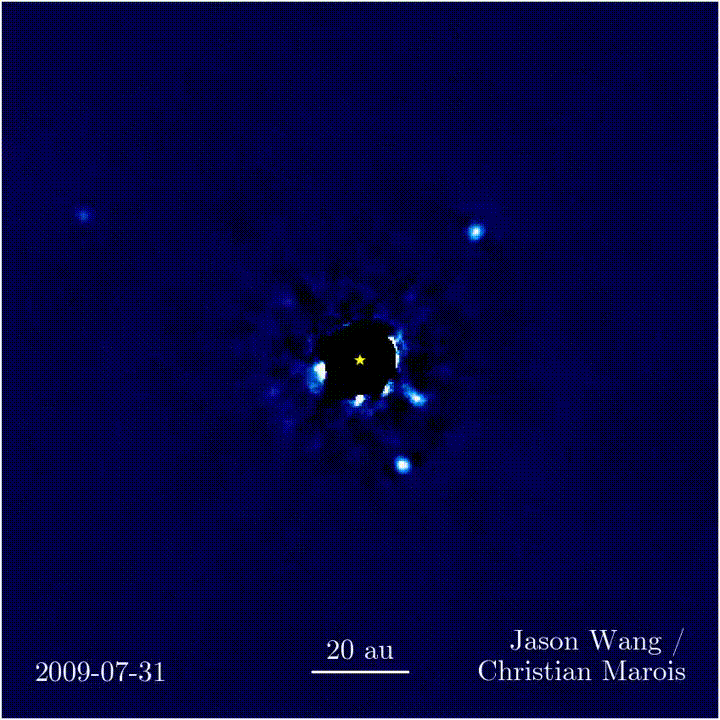
If galaxies worked similarly, you’d expect to find an analogous relationship to our Solar System by measuring their internal motions. The only factors that determines a bound object’s orbital speed are how much mass is interior to the orbit and how large the orbit is. In the Solar System, the speeds of the planets enable us to determine the Sun’s mass (because we know G, the gravitational constant) and conclude that the Sun contains 99.8% of the Solar System’s mass.
In a galaxy, there should be many masses contributing throughout, but looking at how the light is distributed should tell you something about how the mass is distributed. This should affect the rotation speeds at different distances from the galactic center. This was the problem Vera Rubin first set her sights on investigating.
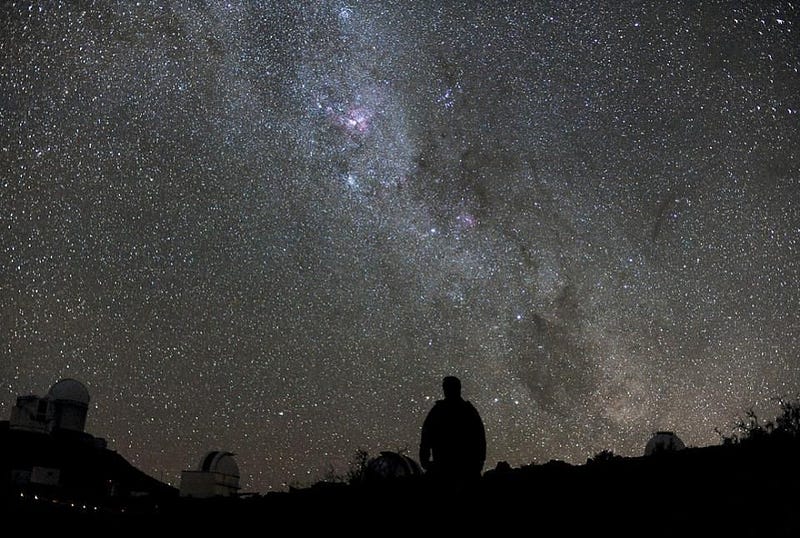
In her early research towards this end, she began measuring stars within our own Milky Way, attempting to determine how quickly they were orbiting with respect to the galactic center. Being stuck inside our own galaxy, this is a challenging observation to make! The outer disk of the Milky Way is most easily visible if you look opposite to the direction of the galactic center, and that’s exactly the wrong direction to measure a line-of-sight motion, as the stars should be rotating around the galactic center transverse to our perspective.
It’s no surprise, then, that her conclusions — that the outer part of the galaxy had the same rotational speeds, rather than a lower one, as compared to the interior regions of the Milky Way — were widely dismissed. But the opinion of the masses of astronomers would not dissuade her. Armed with a brand new spectrograph, Vera Rubin, along with Kent Ford, sought to measure exactly how galaxies rotated.
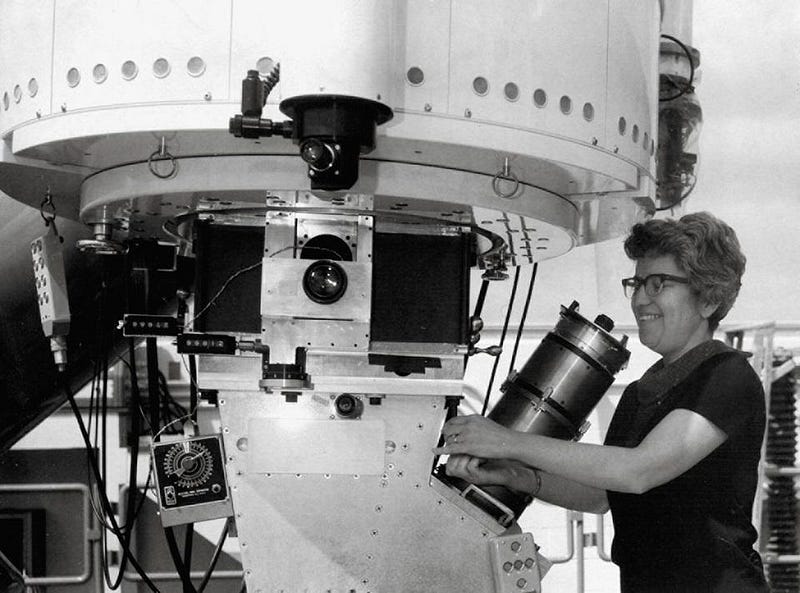
The first galaxy they set their sights on, way back in 1968, was Andromeda. Andromeda is the closest large galaxy to our own Milky Way, taking up a whopping three degrees on the sky (about the diameter of six full Moons). In the 1880s, the first long-exposure photograph of Andromeda was taken, revealing its spiral structure. Being nearly edge-on to us, this means that one side of it should appear to be rotating towards us from our perspective, while the other side should appear to be rotating away from our line-of-sight.
Lo and behold, Andromeda indicated the same puzzling effect that her earlier research on the Milky Way showed: that the outer regions of a galaxy rotated just as quickly as the inner regions. Throughout the 1970s, Rubin continued her work and extended it to many galaxies at a variety of distances. They all exhibited the same effect: their rotation curves did not follow the naive relationship we expected between mass and light.

This wasn’t the slam-dunk proof of dark matter you might have been hoping for, as there were many possible explanations for Rubin’s observations alone. Soon after, however, other independent lines of evidence came in, supporting a unified picture of cosmology. Big Bang Nucleosynthesis demonstrated that only 5% of the total Universe could be explained by normal matter; gravitational lensing and large-scale structure formation indicated that 25–30% of the Universe was some form of matter overall.
The Cosmic Microwave Background revealed the ratio between normal matter and dark matter to be 1-to-5, and this was confirmed by the detection of baryon acoustic oscillations, which arrives at the same figure. Zwicky, shortly after Rubin’s research was published, suddenly found himself in the mainstream: he was awarded the Gold Medal by the Royal Astronomical Society.
Today, the belief that dark matter primarily drives the formation of cosmic structure is nearly universal, with the normal matter inside forming stars and other rich, collapsed objects.

Dark matter should drive the formation of structure on all large scales, with every galaxy consisting of a large, diffuse halo of dark matter that is far less dense and more diffuse than the normal matter. While the normal matter clumps and clusters together, since it can stick together and interact, dark matter simply passes through both itself and normal matter. Without dark matter, the Universe wouldn’t match our observations.
But this branch of science truly got its start with the revolutionary work of Vera Rubin. While many, including me, will deride the Nobel committee for snubbing her revolutionary science, she truly did change the Universe. On what would have been her 91st birthday, remember her in her own words:
Don’t let anyone keep you down for silly reasons such as who you are, and don’t worry about prizes and fame. The real prize is finding something new out there.
50 years later, we’re still investigating the mystery Vera Rubin uncovered. May there always be more to learn.
Ethan Siegel is the author of Beyond the Galaxy and Treknology. You can pre-order his third book, currently in development: the Encyclopaedia Cosmologica.





